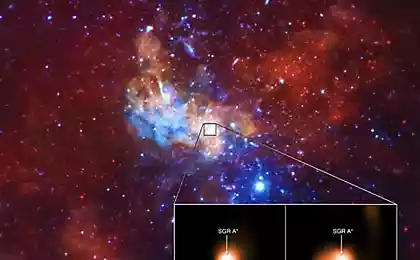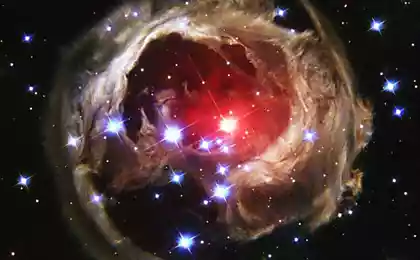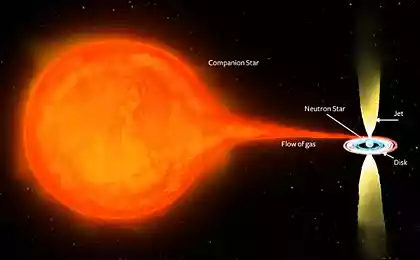1250
Astronomers have discovered in the Small Magellanic Cloud star facility, previously considered hypothetical
With 6, 5-meter optical telescope observatory Las Campas in Chile, astronomers have discovered a red supergiant HV 2112, whose spectrum is very different from the typical for this class of stars. Best of all it corresponds to the spectrum predicted in 1977 by Kip Thorne and astrophysicists Anna Zhitkov exotic binary system. Объект Thorn Zhitkov a close binary system of a red supergiant and a neutron star. The singularity of this facility is that the neutron star in this system as a result of inhibition of the outer layers of the supergiant loses speed and along a spiral trajectory rapidly falls into it. Due to the huge temperature and gravity at the surface of the neutron star matter surrounding her super giant takes unusual fusion reactions, producing an excessive amount of heavy elements - rubidium, lithium, molybdenum.

Thorne-Żytkow object is extremely rare, as they occur only in a very heavy and close binary systems, and are only one of the stages of stellar evolution, which lasts very long. Since the beginning of the deceleration of the neutron star's outer layers of the supergiant to stop her companion in the kernel is just a thousand years. A month later, the two stars finally merge into a single entity. After that Thorne-Żytkow object collapses into a black hole or neutron star, depending on the weight.
Star HV 2112 is today the most likely candidate for the title of Thorne-Żytkow object - its range is very slightly different from the theoretical prediction. No other known today hypothesis can not explain the anomalous spectrum of the star. Now theorists to be finalized taking into account the model of the experimental data - if it succeeds, HV 2112 will receive "official" confirmation of belonging to one of the most exotic class of stellar systems.
Article about the opening published on arxiv.org and is available for free download.
Source: habrahabr.ru/post/226115/

Thorne-Żytkow object is extremely rare, as they occur only in a very heavy and close binary systems, and are only one of the stages of stellar evolution, which lasts very long. Since the beginning of the deceleration of the neutron star's outer layers of the supergiant to stop her companion in the kernel is just a thousand years. A month later, the two stars finally merge into a single entity. After that Thorne-Żytkow object collapses into a black hole or neutron star, depending on the weight.
Star HV 2112 is today the most likely candidate for the title of Thorne-Żytkow object - its range is very slightly different from the theoretical prediction. No other known today hypothesis can not explain the anomalous spectrum of the star. Now theorists to be finalized taking into account the model of the experimental data - if it succeeds, HV 2112 will receive "official" confirmation of belonging to one of the most exotic class of stellar systems.
Article about the opening published on arxiv.org and is available for free download.
Source: habrahabr.ru/post/226115/























